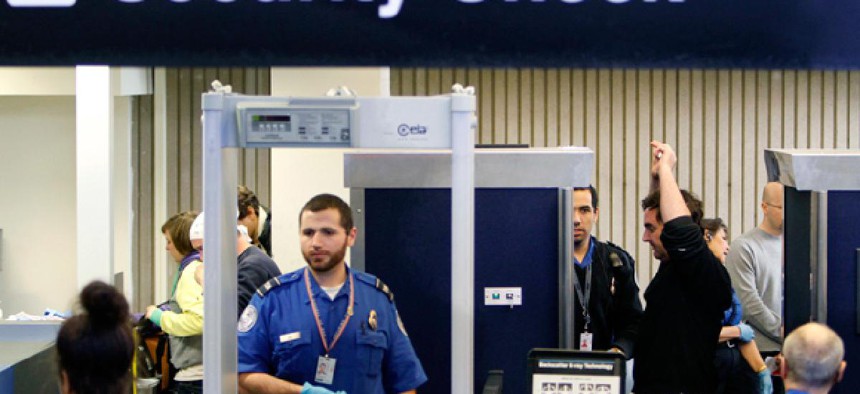Thrifty Nuclear Terrorism Nanodetectors Delayed by Funding Uncertainty

Logan International Airport in Boston Michael Dwyer/AP File Photo
No timeline for installing the atomic screeners at borders, airports.
The Energy Department this month announced plans to prop up nanotechnology sensors at airports and other U.S. entry points for detecting nuclear substances, but there is no rollout timetable because of budget uncertainty, according to operators of the counterterrorism program.
The new nanotech sensors can be produced for less than .17 percent of the price of existing sensor technology, with the equivalent of $300 worth of current materials now costing 50 cents, scientists reported to Congress in 2010. The screening tools were created to elucidate concealed nuclear substances in border stations, cities and various ports of entry, said officials with National Security Technologies, which runs the department’s Nevada National Security Site. Many Energy laboratories and facilities are government-owned and contractor-operated.
"No timeline for deployment has been set," National Security Technologies spokesman Jeff Donaldson told Nextgov. "It will be based on funding availability, at the discretion of the National Nuclear Security Administration." The agency, part of Energy, is subject to the “sequester” -- default funding reductions mandated by a 2011 debt ceiling deal that took effect Friday.
Traditional sensor-making that requires growing big, fragile crystals to visibly illuminate nuclear radiation is more expensive than manufacturing bulk nanocrystals that fit into plastic, the 2010 report stated. The nanosensors are rugged enough to be embedded into large sheets of material for screening wide areas.
Since these detectors can be produced at industrial scale, many departments, including, for example, Homeland Security and Defense, could deploy them across high-population or vulnerable locations, scientists at the site said. The agencies’ ability to field the tools, again, would depend on future year budgets, they added.
Site officials said that, during the past year, they proved the sensors work at Nellis Air Force Base and now they are shifting to the production phase.
NEXT STORY: Good customer service ideas can be free






